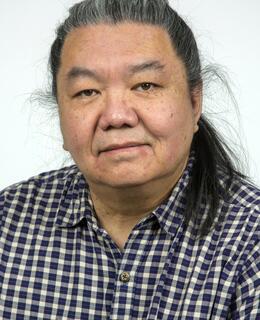

Dr. Angus Chu
Positions
Professor
Schulich School of Engineering, Department of Civil Engineering
Contact information
Phone number
Office: +1 (403) 220-8987
Background
Educational Background
B.Sc. University of British Columbia, 1988
Doctor of Philosophy University of British Columbia, 1995
M.Sc. University of British Columbia, 1990
Biography
He has done and continues to do research in Advanced wastewater treatment, including biological nutrient removal from wastewater, microbial fuel cells for enhanced nitrification/denitrification, remediation of contaminated sites and optimization of fermenters for volatile fatty acid production. He has collaborated with the City of Calgary for 25 years on a number of research initiatives including stormwater treatment and management, river ecosystem impairment and remediation and low impact development. He’s worked with colleagues in Geosciences on the transport of microbial and chemical contaminants in the subsurface and the subsequent remediation of those contaminants. He has collaborated with researchers from Alberta Environment, the prairie farmers rehabilitation administration, Imperial Oil Ltd., Agriculture Canada Research station in Lethbridge, Worley Parsons and AECOM.
Research
Areas of Research
Optimization of wastewater treatment technologies
Optimization study of full scale fermenters located at the Bonnybrook biological nutrient removal (BNR) wastewater treatment facility operated by the city of Calgary. This plant has full scale fermenters to produce the necessary carbon substrates to achieve reliable BNR through their process. The research objective is to optimize the production of these carbon substrates from their fermenter process.
Development of a molecular assay for the detection and enumeration of disease causing organisms in drinking water
This research program is a result of collaborative efforts from both the Departments of Microbiology and Civil Engineering (Engineering for the Environment). Traditional techniques for detecting disease in water are to enumerate indicator organisms. These techniques are growth associated and equipment intensive. The departments of Microbiology and Civil Engineering are currently developing a molecular assay for the identification and enumeration of disease causing organisms in environmental samples.
Toxicity of contaminated flare pit soils
The existence of flare pits in Alberta is of the undesirable byproducts of oil and gas production. In Alberta's oil patch, flare pits have been used to store and/or burn produced fluids at older oil and gas well sites. Since produced fluids may contain liquid hydrocarbons, process chemicals, crude bitumen or salt water, they invariably contain contaminated sludge and soils. Most of these pits are unlined excavations and can pose a significant risk to the environment and subsequently human health. As of December 31, 1996 produced fluids are not allowed to be discharged to earthen pits in Alberta. Remediation and decommissioning of thousands of flare pits in Alberta pose a serious challenge for the oil and gas industry. There is an estimated 10,000 such flare pit sites in Alberta alone.
Characterization of cold climate petroleum degrading microorganisms
The use of microorganisms in the cleanup of contaminated sites displays significant promise for application due to its versatility and cost effectiveness. Bioventing is a specific bioremediation technique that involves the delivery of gaseous or liquid oxygen to the soil subsurface via injection wells to stimulate biodegradation. It is the purpose of this study to characterize and identify the microbial populations occurring in situ bioventing applications.
Participation in university strategic initiatives
Courses
| Course number | Course title | Semester |
|---|---|---|
| ENCI 508 LAB 01 B01 | Environmental Aspect of Energy | 2020 |
| ENCI 508 LEC 01 01 | Environmental Aspect of Energy | 2021 |
| ENCI 508 LAB 02 B02 | Environmental Aspect of Energy | 2021 |
| ENCI 508 LAB 03 B03 | Environmental Aspect of Energy | 2020 |
| ENCI 508 LAB 04 B04 | Environmental Aspect of Energy | 2020 |
| ENCI 581 LAB 01 B01 | Environmental Engineering II | 2021 |
| ENCI 581 LAB 02 B02 | Environmental Engineering II | 2021 |
| ENCI 581 LAB 03 B03 | Environmental Engineering II | 2020 |
| ENCI 581 LAB 04 B04 | Environmental Engineering II | 2020 |
| ENCI 581 LEC 01 01 | Environmental Engineering II | 2021 |
| ENEE 51907 LEC 01 01 | Special Topics in ENEE | 2021 |
| ENEE 51907 TUT 01 T01 | Special Topics in ENEE | 2020 |
| ENEN 605 LEC 01 01 | EnvironmentalChem&Microbiology | 2020 |
Publications
- Water quantity and quality performance monitoring at Okotoks Bioretention Research Site. Anton Skorobogatov; Bert van Duin; Jennifer He; Angus Chu; Bernie Amell. Bow River Basin Council. (2019)
- Induced polarization for biofilm monitoring in situ of bioretention cells. R B Bhiladvala; F Jalilian; Angus Chu; Jennifer He; Caterina Valeo. Canadian Water Resources Association. (2018)
- Chemical leaching from two low impact development techniques. Anton Skorobagotov; Musa Akther; Jennifer He; Angus Chu; Bert van Duin. (2018)
- Chemical leaching behaviour of a full-scale green roof in Calgary, Alberta. Musa Akther; Bert van Duin; Angus Chu; Jennifer He. (2019)
- Response of green roof performance to multiple hydrologic and design variables: a laboratory investigation. Musa Akther; Jennifer He; Angus Chu; Usman T Khan; Caterina Valeo. IWA. 8pp. (2017)
- Evaluation of clam shells for pollutant removal in stormwater. Angus Chu; Caterina Valeo; Z Xu. Canadian Water Resources Association. (2018)
- Leaching behavior of nutrients and metals of green roofs: Laboratory and field studies. Bert van Duin; Jennifer He; Musa Akther; Angus Chu. Canadian Society of Civil Egnineers. 10pp. (2018)
Are you the profile owner?
Login to edit.
